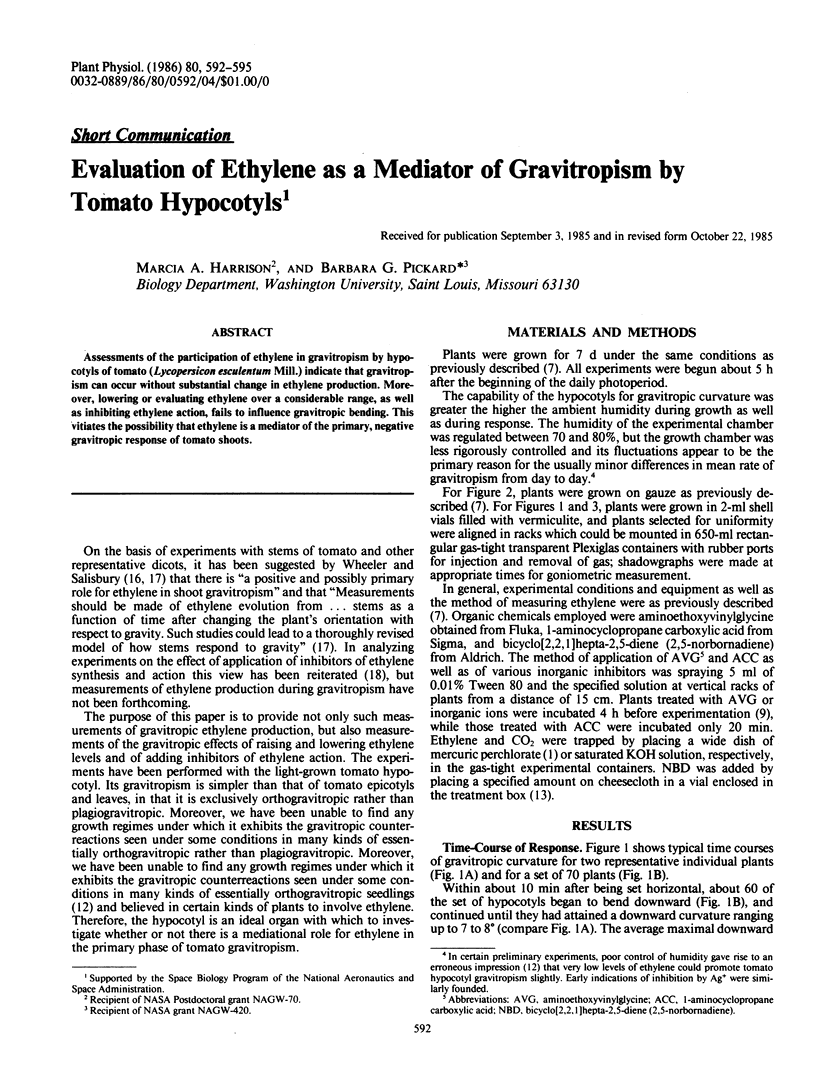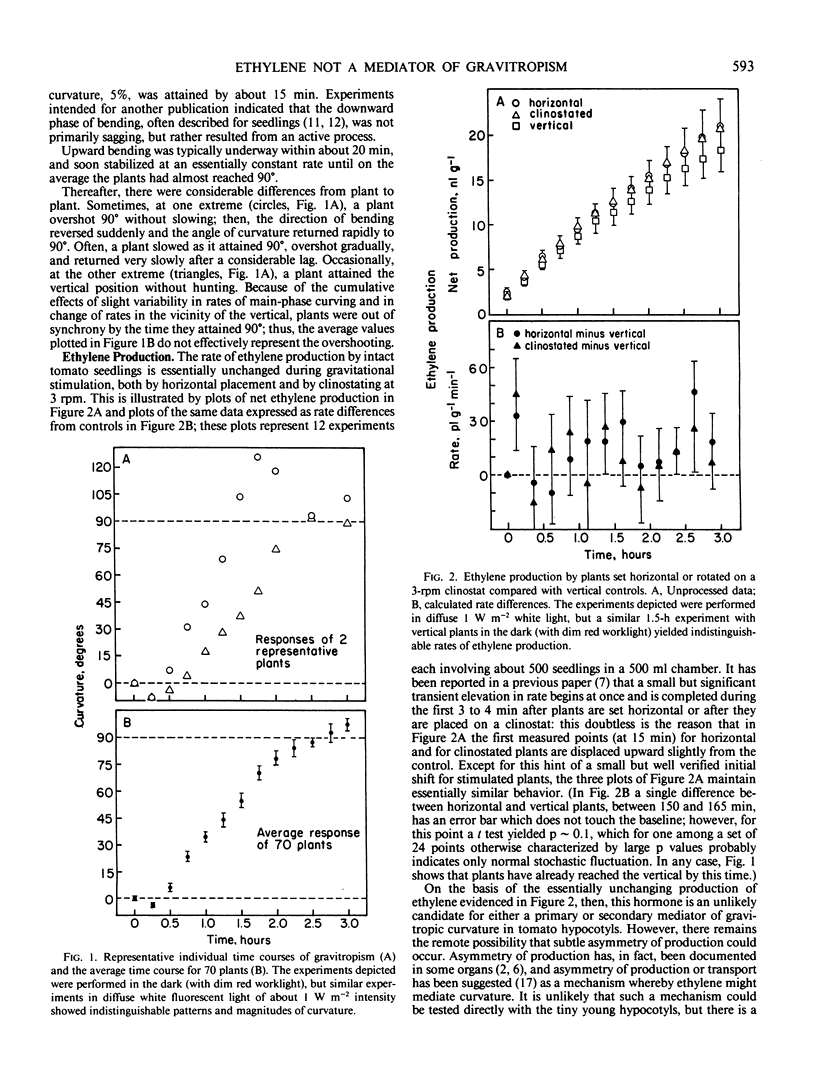Abstract
Assessments of the participation of ethylene in gravitropism by hypocotyls of tomato (Lycopersicon esculentum Mill.) indicate that gravitropism can occur without substantial change in ethylene production. Moreover, lowering or evaluating ethylene over a considerable range, as well as inhibiting ethylene action, fails to influence gravitropic bending. This vitiates the possibility that ethylene is a mediator of the primary, negative gravitropic response of tomato shoots.
Full text
PDF



Selected References
These references are in PubMed. This may not be the complete list of references from this article.
- Abeles F. B., Rubinstein B. Regulation of Ethylene Evolution and Leaf Abscission by Auxin. Plant Physiol. 1964 Nov;39(6):963–969. doi: 10.1104/pp.39.6.963. [DOI] [PMC free article] [PubMed] [Google Scholar]
- Beyer E. M. A potent inhibitor of ethylene action in plants. Plant Physiol. 1976 Sep;58(3):268–271. doi: 10.1104/pp.58.3.268. [DOI] [PMC free article] [PubMed] [Google Scholar]
- Bradford K. J., Yang S. F. Stress-induced Ethylene Production in the Ethylene-requiring Tomato Mutant Diageotropica. Plant Physiol. 1980 Feb;65(2):327–330. doi: 10.1104/pp.65.2.327. [DOI] [PMC free article] [PubMed] [Google Scholar]
- Burg S. P., Burg E. A. Molecular requirements for the biological activity of ethylene. Plant Physiol. 1967 Jan;42(1):144–152. doi: 10.1104/pp.42.1.144. [DOI] [PMC free article] [PubMed] [Google Scholar]
- Harrison M., Pickard B. G. Burst of ethylene upon horizontal placement of tomato seedlings. Plant Physiol. 1984;75:1167–1169. doi: 10.1104/pp.75.4.1167. [DOI] [PMC free article] [PubMed] [Google Scholar]
- Lau O. L., Yang S. F. Inhibition of ethylene production by cobaltous ion. Plant Physiol. 1976 Jul;58(1):114–117. doi: 10.1104/pp.58.1.114. [DOI] [PMC free article] [PubMed] [Google Scholar]
- Leather G. R., Forrence L. E. Increased Ethylene Production during Clinostat Experiments May Cause Leaf Epinasty. Plant Physiol. 1972 Feb;49(2):183–186. doi: 10.1104/pp.49.2.183. [DOI] [PMC free article] [PubMed] [Google Scholar]
- Pickard B. G. Early events in geotropism of seedling shoots. Annu Rev Plant Physiol. 1985;36:55–75. doi: 10.1146/annurev.pp.36.060185.000415. [DOI] [PubMed] [Google Scholar]
- Wheeler R. M., Salisbury F. B. Gravitropism in Higher Plant Shoots: I. A ROLE FOR ETHYLENE. Plant Physiol. 1981 Apr;67(4):686–690. doi: 10.1104/pp.67.4.686. [DOI] [PMC free article] [PubMed] [Google Scholar]
- Wheeler R. M., Salisbury F. B. Gravitropism in plant stems may require ethylene. Science. 1980 Sep 5;209(4461):1126–1128. doi: 10.1126/science.209.4461.1126. [DOI] [PubMed] [Google Scholar]
- Zobel R. W. Some Physiological Characteristics of the Ethylene-requiring Tomato Mutant Diageotropica. Plant Physiol. 1973 Oct;52(4):385–389. doi: 10.1104/pp.52.4.385. [DOI] [PMC free article] [PubMed] [Google Scholar]


